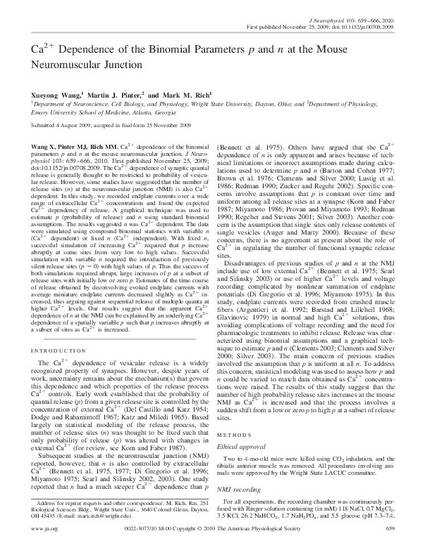
The Ca2+ dependence of synaptic quantal release is generally thought to be restricted to probability of vesicular release. However, some studies have suggested that the number of release sites (n) at the neuromuscular junction (NMJ) is also Ca2+ dependent. In this study, we recorded endplate currents over a wide range of extracellular Ca2+ concentrations and found the expected Ca2+ dependency of release. A graphical technique was used to estimate p (probability of release) and n using standard binomial assumptions. The results suggested n was Ca2+ dependent. The data were simulated using compound binomial statistics with variable n (Ca2+ dependent) or fixed n (Ca2+ independent). With fixed n, successful simulation of increasing Ca2+ required that p increase abruptly at some sites from very low to high values. Successful simulation with variable n required the introduction of previously silent release sites (p = 0) with high values of p. Thus the success of both simulations required abrupt, large increases of p at a subset of release sites with initially low or zero p. Estimates of the time course of release obtained by deconvolving evoked endplate currents with average miniature endplate currents decreased slightly as Ca2+ increased, thus arguing against sequential release of multiple quanta at higher Ca2+ levels. Our results suggest that the apparent Ca2+ dependence of n at the NMJ can be explained by an underlying Ca2+ dependence of a spatially variable p such that p increases abruptly at a subset of sites as Ca2+ is increased.
Available at: http://works.bepress.com/mark_rich/66/
